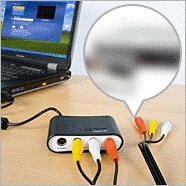- Record videos as avi, wmv, flv, mpg, mp4, mov and more video formats; Capture video from a webcam, network IP camera or video input device (e.g., VHS recorder) Screen capture software records the entire screen, a single window or any selected portion; Mouse highlighting spotlights the location of the cursor when using screen recorder.
- Convert VHS file to MP4, MOV, AVI, MKV and other 150+ video/audio formats. Download videos from YouTube and over 1,000 popular sites. Burn video to DVD with free attractive templates. Built-in video editor allow to trim, crop, add subtitle, watermark, effects to the video. Transfer video to iPhone, iPad, Android and other devices easily.
Save your home video memories forever in digital MP4 files that you can use to share on social media with you friends and family. In this video I use a easycap usb capture device Open Broadcaster Software Free and open source software for video recording and live streaming. Download and start streaming quickly and easily on Windows, Mac or Linux. Share your gaming, art. Vhs Video Capture free download - Easy Video Capture, Video Capture Master, Video Download Capture, and many more programs.
I recently ordered a set of videos that I remember from a few years ago that did not make the jump to DVD, unfortunately.
I do have a VCR; however, I never have it hooked up because…why would I?
The solution here: convert my VHS tapes into H.264/MP3 mp4-contained files.
Now the question is: how?
Hardware ¶
I managed to grab an EasyCap D60 Recording device from Amazon.
This device is supported inside the linux kernel (from version 3.18 forward…maybe?)

Once I plugged in this device, it was working:
This bad boy:
| Bus | 1 | Device | 016: | ID | 1b71:3002 | Fushicai | USBTV007 | Video | Grabber | [EasyCAP] |

I checked out:
And I noticed a new video device video1. Easy.
Capture Software ¶
I used VLC to caputre raw input.
Media→Open Caputre DeviceVideo Device Name→/dev/video1Audio Device Name→hw:2,0Playpulldown menu →ConvertDump Raw InputDestination File→/home/tyler/VideosStart- Hit play on the VCR
- Hit the Rec. button in VLC
The auto-named avi file in ~/Videos was FUCKING HUGE.
Conversion ¶
Video Capture Software Vhs To Mp4 Driver
I found a blog where a person does this. I have a vauge memory about doing this at UpSync, so I'll give it a shot: 2-pass mp4 conversion.
Let's see what happens!
Video Capture Software Vhs To Mp4
The settings above created an mp4 that could be played via x264 on a RaspberryPi 3.